Joanna Nelson Architect
Joanna Nelson graduated with honours from Adelaide University. She established her own practice in Melbourne in 1987. From 2005 to 2009 she worked as Senior Architect with the National Capital Authority in Canberra. She returned to private practice in 2010 and now works on projects in Canberra, regional NSW, Melbourne and regional Victoria. Joanna Nelson Architect is dedicated to the inventive and rigorous exploration of the architectural potential of each project. Her projects have won numerous awards and been included in a range of publications.
Driving directions to Joanna Nelson Architect on map
Joanna Nelson Architect on Google Maps
Projects:
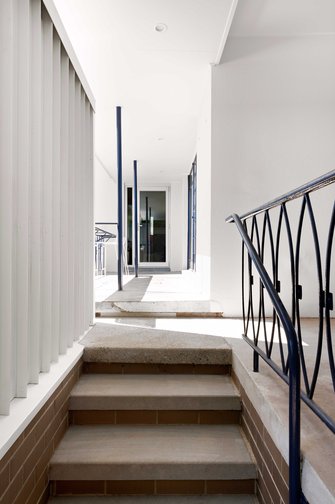
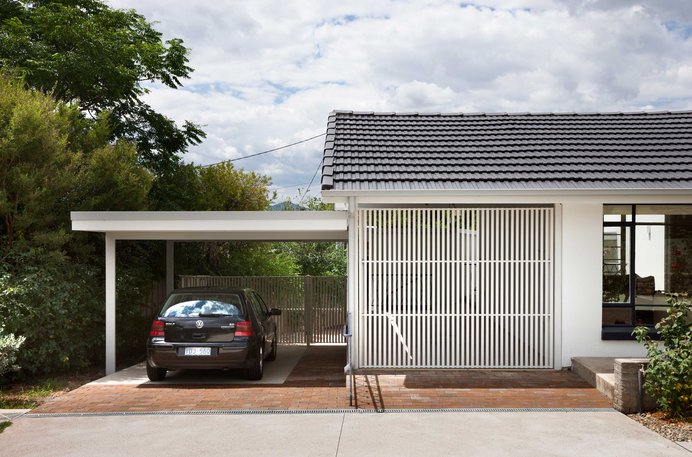
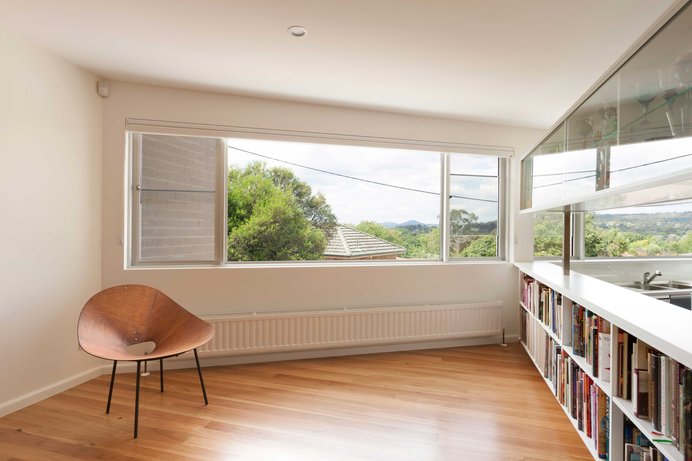
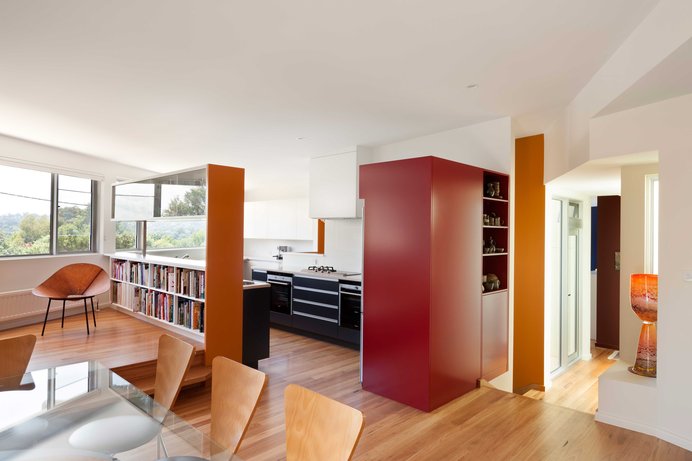
Boomerang House
Curtin ACT 2605, 2014
A 1960s house on an elevated suburban site in Canberra has been reorganised and reoriented through new interior and exterior spaces over four levels. The house is an example of the short-lived mid-1960s ‘Boomerang Style’. While low and elegant from the street, the house loomed awkwardly over its tapered and sloping rear garden. The principal architectural idea was to retain the considerable embodied energy – material and cultural – of the original house and create a strong counterpoint in the design of the new spaces. By rotating the new rear walls at 30 degrees to the main front wall, the new spaces are oriented directly to north, the rear boundary and long views. The new low-pitched roof line follows the ground slope, settles the different levels and forms into the site and distinguishes the new forms from the original tiled ‘boomerang’ shaped gable roof. The original white rendered walls give way to white steel profiled cladding, which folds around the sharp corners and draws the eye into the courtyards and terraces tucked within the overall volume. Various original elements reappear, including the balustrades and the concrete driveway, broken and relaid in the front garden as a retaining wall.
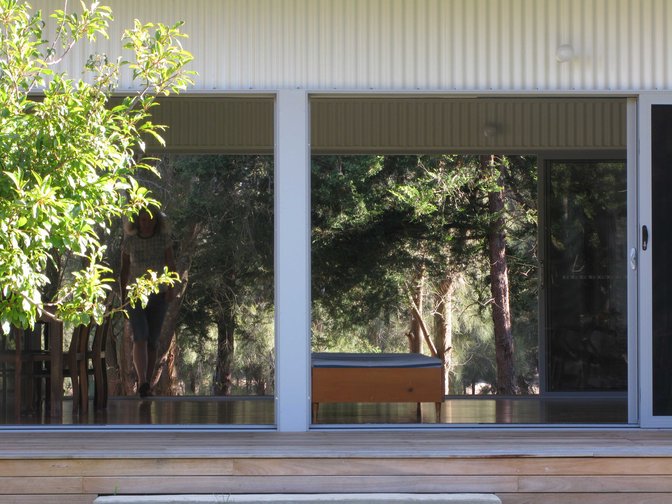
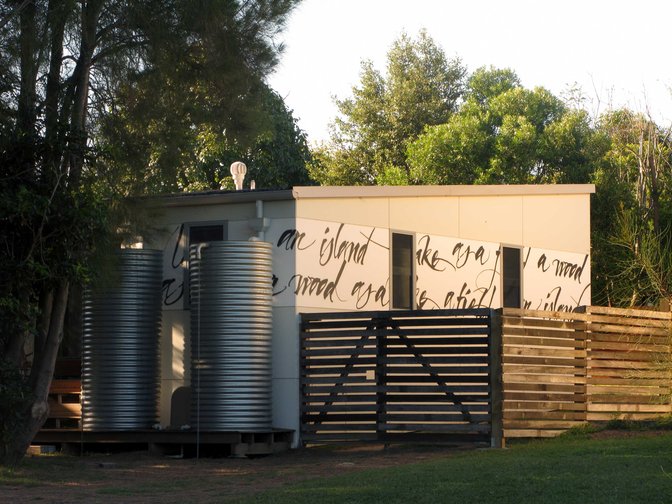
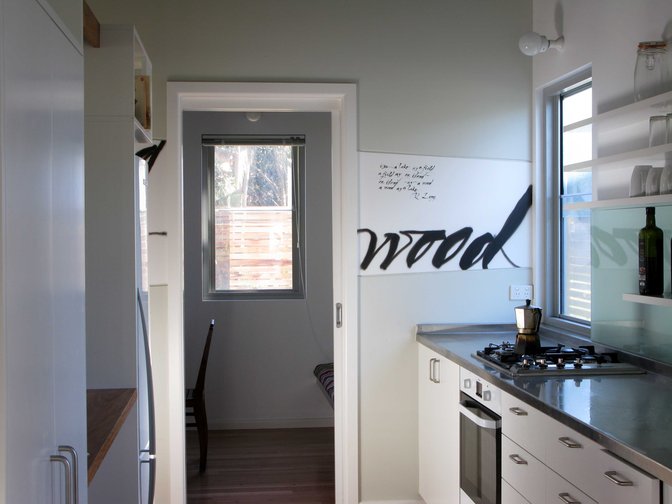
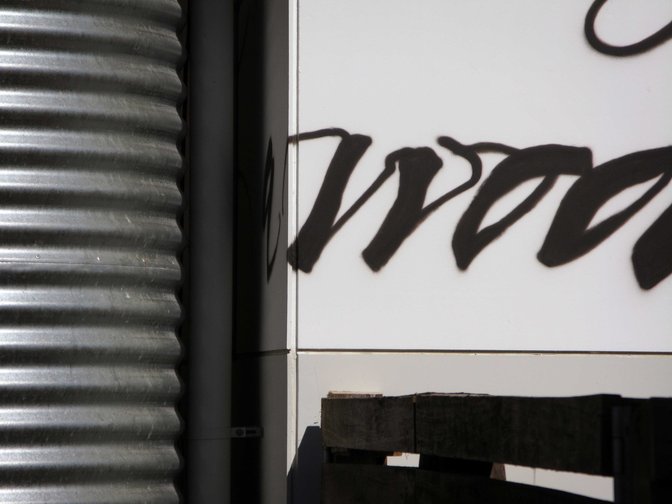
Potato Point House
Potato Point NSW 2545, 2011
Opposite an estuary in Potato Point NSW, the vacant suburban site came with an L shaped slatted timber windbreak fence behind a grove of casuarinas. The house works as a habitable windbreak fence, maintaining the contrast between the sunny, open rear and the shady, filtered front. The house was imagined by the (expatriate) clients as their retreat, but also as a public space, visited independently by Canberra friends and extended family. Taking as precedent the work of Melbourne architect Guilford Bell (1909-1992), the house uses tightly planned, axially ordered spaces and simple materials to achieve a theatrical setting. These three ideas: house as windbreak fence / public space / stage set, invited another layer of endeavour – graffiti / public art / painted backdrop. Graffiti artist byrd (Dan Maginnity) proposed a poem, applied with stencil and spray can: I see a lake as a field / a field as an island / an island as a wood / a wood as a lake The project includes onsite grey water treatment, composting toilets and rainwater for the washing machine and external shower. The windbreak fence was recycled as boundary fence and gates.
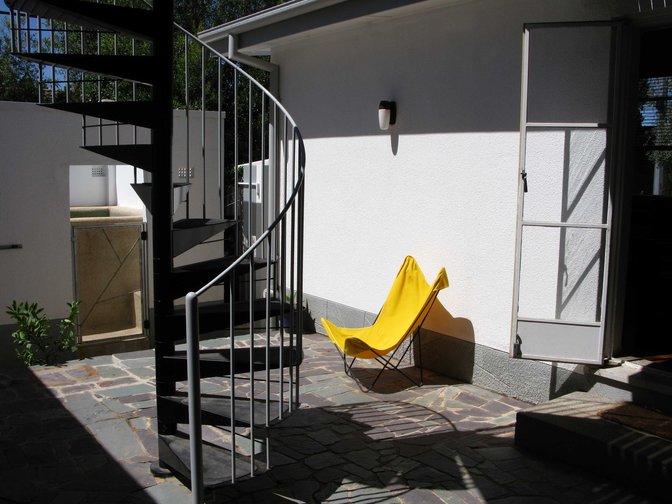
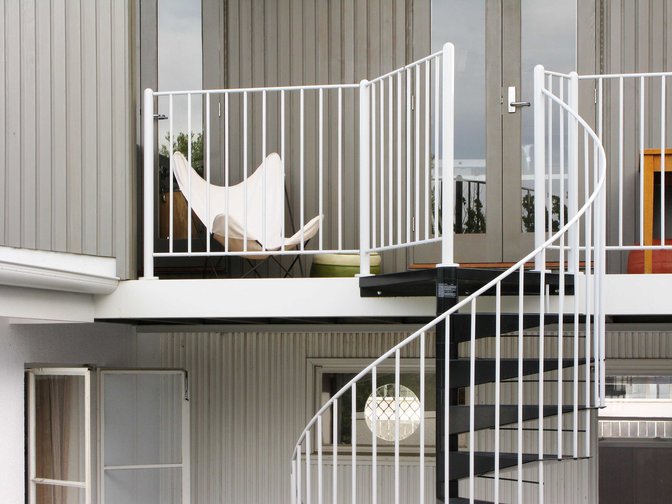
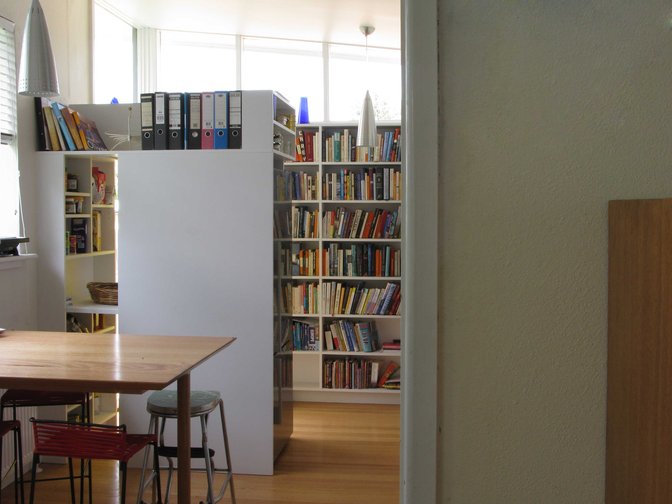
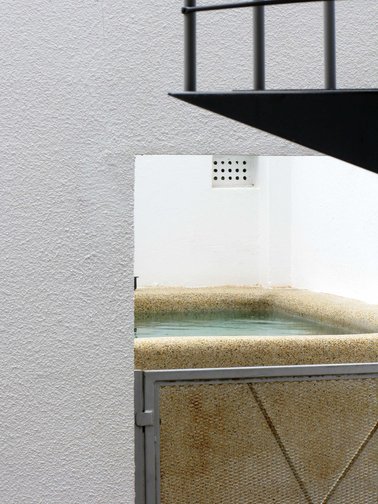
H House
O’Connor ACT 2602, 2009
This small project uses a minimal number of architectural manoeuvres to create maximum sensory impact. The subject is a 1959 ‘H plan’ house and garage, in an inner Canberra suburb. A brittle gum towers over the house and reappears once inside the house and courtyards, encapsulating the experience of Canberra as a city in the landscape. H House embodies city also in the courtyards, which encourage the social activities of the public square. The first move is to retain the flow of the plan, including the enigmatic arrival sequence. Bathroom, kitchen and laundry are reworked within the existing spaces. The second move is to place a new studio and balcony, above and overhanging, the central entry hall, providing new sheltered outdoor spaces. Access is by a spiral staircase placed centrally in the courtyard. From this point of prospect, one can see far distances and feel connected to the landscape. The third move is to remove the roof of the rendered brick garage next to the courtyard and insert a small pool, open only to the sky. Standing on the pool ledge, one can look over the wall to connect, at a mid height, with both courtyard below and balcony above.



